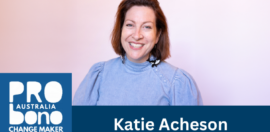NDIS Challenged by Market Size
16 July 2015 at 10:30 am
Even with bipartisan support for the National Disability Insurance Scheme governmental and other challenges remain around market size, writes social change strategist Suhit Anantula.
The National Disability Insurance Scheme in Australia is a new way to fund, provide support and enable people with disabilities to have a better life. This is a massive change to the sector and one in which there are multiple challenges from a political, governmental, organisational and individual point of view.
With bi-partisan support the political challenges are mostly gone for now. However, the governmental and other challenges remain.
For example, in SA the trial site for NDIS is focused on children below 13 years. The idea is to test different cohorts in different parts of the country to test the model before you scale it.
One of the challenges is understanding the “size of the market” to figure out the scale of services and the cost of delivering them. The initial estimate in SA was 5000 kids for children below 13 years. This however, has not translated as planned. Right now the estimated demand is at least double that at 10,000 kids.
In terms of the human angle, it is a troubling fact that there are 10,000 children who need care and the challenge for these families to provide care is tremendous. For the Government, it doubles the pilot cost. For organisations, it changes the size of the market they have to serve. However, things are not so simple as there are bottlenecks in terms of processes to interview the children, assess them and then provide the right service.
So, why has this happened? For one, it is always hard to estimate the size of the market for any business. In cases where you can provide a better service than currently available; the the size of the market always increases.
Remember when the iPhone was launched in 2007. The demand for a smartphone with a data connection was almost non-existent. However, the iPhone solved a need or want for customers that was not possible earlier or it did it better than other phones. And now, in Australia smartphones are a common occurrence and our monthly bills have gone from $30 a month to $100 a month. How would you estimate the size of the market in this context? Its very hard. In fact, the biggest challenge for Apple in selling its iPhones is not knowing the size of the demand to produce enough of them because the size of the market is constantly increasing.
Now if you think about the NDIS market and zoom into the children below 13 years in SA, we have the same challenge.
I don’t have inside knowledge into how the initial numbers were crunched. Irrespective of the initial size of the market, it will increase for a few reasons.
1. Increased Knowledge: Lots of parents may not have accessed state services earlier. However, due to the increased knowledge of NDIS through the political campaign; more and more people know about the program. This in-turn means they will register for the pilot program. The campaign promised more services and more money which means demand will increase.
2. Better Services: Once organisations start to provide better services that information will flow and through word of mouth there will be more people wanting these services.
The challenge will be then in terms of who is eligible for government support and what kind of support. And what happens for the rest?
For organisations, if you can provide a better service your market will be bigger than now and you will have an opportunity to make more people’s lives better and build a sustainable business model.
I will not be surprised if there is increases in the size of the NDIS market across the country in the coming years.
What are your views on this? If you are interested to explore how this works for your organisation, do not hesitate to contact me.
About the Author: Suhit Anantula is a leading social change strategist working at the intersection of entrepreneurship, design and social change. He works on adaptive social challenges and enables organisations to build new business models that create change and are sustainable. He blogs at www.humanomics.co and you can contact him at suhit.anantula@businessmodelsinc.com







